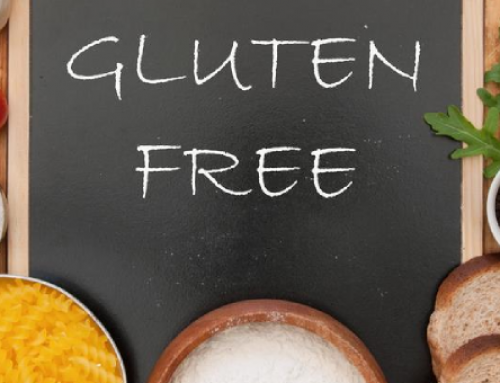A few years ago, I was able to shed 50 pounds safely by making the commitment to dramatically change my diet and behaviors. Today, I am happy with a consistent healthy weight and enjoy a healthy lifestyle. I have grown to adore healthy foods. I have no cravings for empty calorie foods like soda or potato chips. I have not consumed these foods for over three years. In fact, I actually feel sick if I eat something sugary. Instead, I prefer homemade smoothies, kale chips, and vegetable omelets. My cravings for unhealthy foods are rare because my body is satisfied with the nutrients I eat. If I am craving something, I try to find the deficiency in my diet that is causing the craving and it is eliminated.
Are you struggling to lose weight and keep it off? Do you feel sluggish and unhealthy because of the foods you eat? Don’t worry. You can lose weight and feel great, too. I will share my secrets with you. Check out these twenty steps that you can incorporate into your daily life. These steps will not only result in weight loss, but also a healthier you!
1. Take each day at a time. If you lose weight gradually, it will stay off. Do not take dramatic measures, but slowly build up and incorporate one habit at a time. If you don’t start with with small steps, you could set yourself up for failure. Instead, you should incorporate a behavioral and lifestyle change. For example, if you have a problem with consuming too much chocolate then you should not cut it out completely or all at once. Instead, you can choose to start with having small amounts per week for a month. Then, for the next month you can replace it with dark chocolate. You will eventually train yourself to consume a healthy amount per month. The most important thing you can do to lose weight is to listen to your body. Don’t eat your feelings. If you are not hungry, do not eat.
2. Figure out what you need to do. Make a plan. Write down what you are going to be eating, drinking, and doing (exercise) to reach this goal. Write down what you will be avoiding. Stick to these healthy habits. Remember that in order to be effective, these habits are less about dieting and more about a lifestyle change. Look at past failures at leading a healthy lifestyle and evaluate why you failed. Learn from these mistakes.
3. Get a food diary (if you have a smart phone, there are Apps that serve as food diaries). Keep a log on what triggers an eating binge and avoid those things. Plan meals and snacks ahead of time so that you do not have an excuse to eat unhealthy. If you know you will be hungry later, pack a light snack like carrot sticks and hummus or fruit and yogurt and have it ready when hunger strikes.
4. It is important to switch to a whole foods diet. Eliminate packaged foods and cook from scratch (use local or organic ingredients if possible; avoid conventional GMO foods, especially corn). Replace your sugar cravings with fresh fruit. Add more vegetables to your diet. Only eat 100% whole grains like whole wheat, quinoa, barley, or buckwheat. You may still eat things you like, but only if it is in moderation and if you will be cooking it from scratch (you may have to learn how to cook). Also, do not go shopping when you are hungry. Read food labels carefully. If a packaged food has 10 or more ingredients, it is best not to buy it.
5. Get rid of all hydrogenated fats. Other fats are healthy, but can be unhealthy at high amounts. Butter is not bad, but olive oil is better (fats that are liquid at room temperature are healthier). Do not ever consume margarine. Vegetable oil is not the best for cooking, so replace it with olive oil or avocado oil. Believe it or not, when it comes to fats, whole fat is better. For example, do not drink skim milk or reduced fat milk. Fat free is not the best option either. These are all processed fats and are quite unhealthy. If you are concerned about belly fat, consume monounsaturated fatty acid containing foods (olives, almonds, avocados, and dark chocolate) instead of other fatty foods.
6. Avoid sugar and other artificial sweeteners (this includes white sugar, high fructose corn syrup, brown sugar, and evaporated cane syrup). You can substitute with honey or 100% pure maple syrup for sugar.
7. For all animal byproducts, try to buy organic and pasture raised. Look for humanely raised meat. If this is not possible, look for hormone free products. Remember to purchase whole fat versions of eggs, milk, yogurt, and cheese. When it comes to seafood, avoid farm raised and opt for wild caught. Also, if you don’t like the taste of yogurt, think about taking a probiotic.
8. Drink lots of water (your urine should be a healthy light yellow color). Water is filling and good for you. Add a slice of lemon to water if you don’t enjoy the plain taste. Avoid soda and other unnaturally sweetened drinks. Opt for all natural juices that contain no added sugar. Pick the darkest juice available because it contains the most nutrients. You can even make your own juice or smoothies using a blender and strainer.
9. Get rid of all junk food at home and do not buy any processed food. Try to eat healthy snacks that are homemade from scratch like a honey sweetened cookie, fruit smoothie, or a slice of whole wheat banana bread. Eat raw and unsweetened foods like dried fruit, nuts (shelled pistachios or almonds), and seeds (sunflower or pumpkin seeds). Get the unsalted kind because you can add your own sea salt.
10. Eat only when you are hungry. Eat slowly and take time to enjoy your food. If you can’t help yourself, eat with a smaller spoon and use smaller dishes. If you become full, stop eating. If you like a certain food, remember that it will be still there when you get hungry again. Try not eat when you are in a hurry or on the go.
11. Pack your lunch. If you are worried about not having a warm lunch, purchase a quality thermos (best to avoid microwaves). You can pack homemade soups or stews, pastas, casseroles, or rice. Always be careful about dining out because people tend to eat more and make unhealthier choices when they dine as compared to when they eat a homemade meal.
12. Put encouraging things on your refrigerator or mirror. Leave encouraging notes on your desk. These notes will inspire and remind you of your goal.
13. Having a hard time with certain foods? You can easily add spices and herbs to dress up foods like oatmeal or vegetables for a delicious meal. Don’t like greens at all? It is possible to hide spinach in a smoothie. You should eat a well balanced diet and should not need to take vitamins to ensure you are getting all the nutrients needed. However, a daily multivitamin does not hurt.
14. Park further from the grocery store, take the stairs instead of the elevator, run instead of walk. Incorporate these simple changes to get your body moving.
15. Do not stare at the TV or computer screen all day. Do something that requires more movement. If you must watch TV, you can do squats or push ups during commercials or even work out on the treadmill the entire time.
16. Go for a walk after dinner. Get moving. Exercise for at least 30-60 minutes per day. Remember to stretch before and after. Roll your arms, your head, and your ankles. No matter what shape you are in, you can always do something. If you cannot exercise for long periods of time, build stamina and exercise by going for a short brisk walk. Slowly increase the time on a weekly basis. Short bursts of aerobic exercise can provide amazing benefits.
17. Pick an aerobic sport that you enjoy and do it at least once a week (running/jogging, soccer, power yoga, dance, etc.).
18. Try drinking ice cold water before every meal. It is calorie free and fills you up so that you eat less. You’ll even burn a few calories as your body warms it up. Another thing you can do is to try to cut portion sizes of unhealthy foods by eating one third of what you normally would.
19. Always wait 15 minutes before eating something you are craving. You can drink water to give yourself time to assess whether you will be hungry if you don’t eat it. If you have a sweet tooth, eat fruit to fulfill your cravings. If you are craving an unhealthy food, research on how to make a healthier version from scratch. Also, find out why you are craving unhealthy food. Are you seeking comfort in food and using it to cope with stress instead of exercising or using a healthier coping method? Have you been getting enough nutrients and eating a balanced diet?
20. Eat breakfast. In fact, do not skip any meals. This will starve your body and may cause an eating binge and added weight gain. Take care of your body get enough sleep every night.




It’s a great and useful article, thanks. I also have a site with different articles and new techniques on losing weight called New Weight Loss for 2021